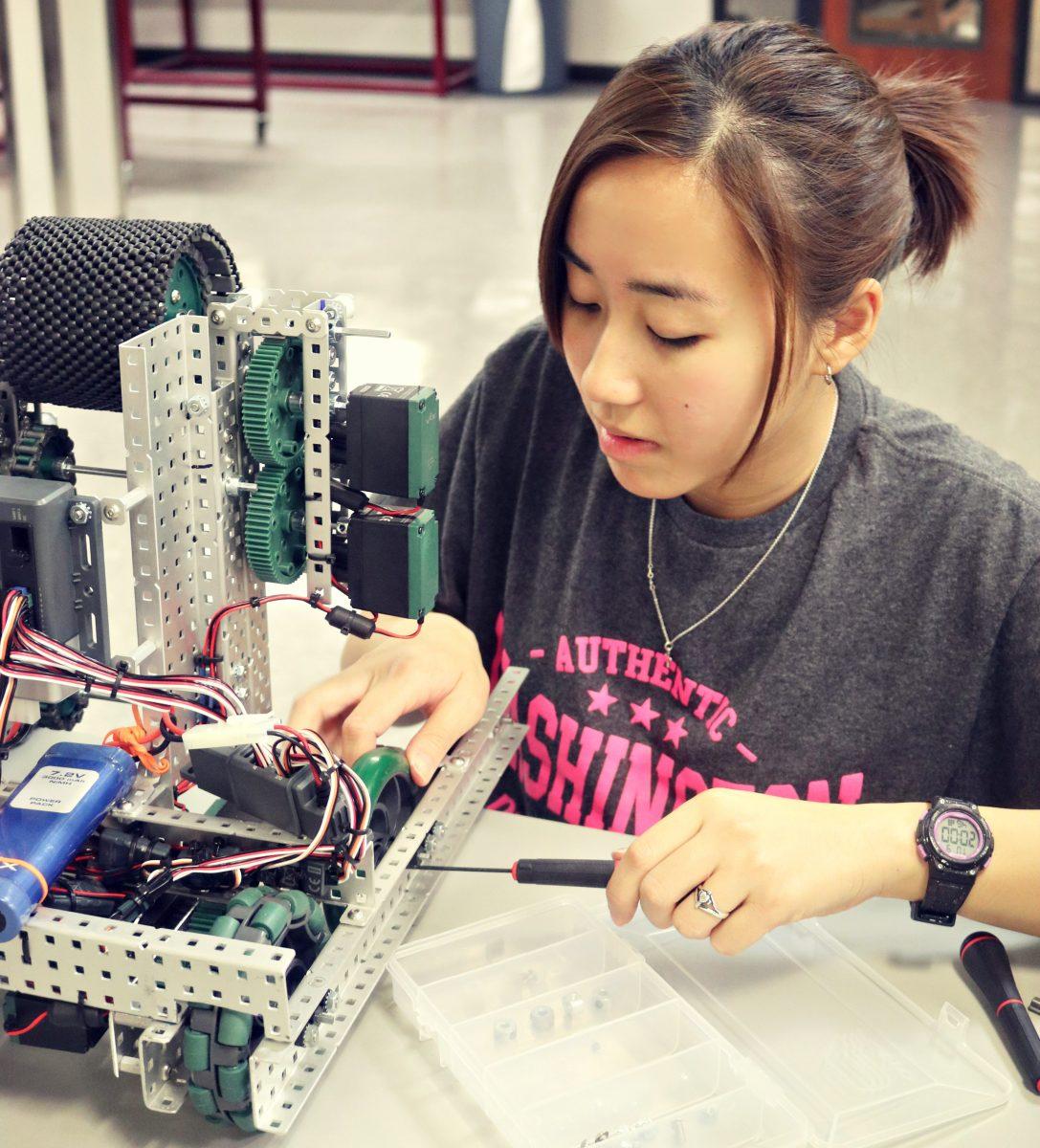From 2010 to 2017, the number of females participating in advanced placement computer science courses has increased from 2,600 to 29,000, according to code.org, a non-profit focused on increasing the interest of women in computer science.
The Texas A&M engineering department focuses not only to increase number in the computer science department, but in female engineers as a whole. Women make up 19.9 percent of engineering undergraduate students and 18.7 percent of them receive engineering nationally.
Shawna Fletcher, director of women in engineering program, said A&M reflects on these numbers and encourages girls to openly become computer science majors. The department holds a cyber security camp for high school and elementary school students with the female students at A&M and they foster various interests in primary school students by creating robotics, Lego and programming teams.
Jamie Holder, Class of 1989 and deputy superintendent of Lindale ISD, said his district has an even split between girls and boys in its computer science classes and University Interscholastic League (UIL) state-wide competitions.
“What we looked at was a pretty even split 53 percent [men] to 47 percent [women],” Holder said. “It is a growing interest in female students. I do agree that 10 years ago when I was a high school principal, the number of students in our computer science courses was predominantly male dominated. So yes, we have seen that swing to be more even and I think it will continue that way. I think there are a lot of opportunities for our young ladies out there and you are seeing that now with their selection and curriculum.”
Along with helping primary school students, A&M is also striving to impact the students that come into the university as an engineering students. Fletcher said targeted support of women in these programs is what will give them the encouragement to move forward into different areas of study without fear of failure. Fletcher added the social synergy between males and females needs to be evaluated to become a more positive force for the advancement for women.
“[Women] will say they hate robots or they hate computing because when they’re on mixed teams,” Fletcher said. “The boys will dig in and the girls will sit back. And so there’s a social interaction that’s happening that we have to eliminate. I know some people are all going against the girl experience but it levels the playing field. I’m telling you women have to have that experience somewhere in their trajectory in order to come in the computing, to come into engineering. If we want bigger numbers we have to mitigate what’s going on with the social construct the social interaction that’s going on between boys and girls.”
While bridging the gap between men and women in engineering comes from collaboration between students, it also includes faculty. Fletcher has been conducting faculty workshops to inform them on ways they can help students improve.
“When I go around and do my faculty focus workshops I’m hoping that I’m opening their eyes to see a difference in what they can do in order to help the students learn and grow,” Fletcher said.
Having restrictive programs for women is an acceptable way for them to receive the education and comfort they deserve, however, with striving to do this we must not cease collaboration with other organizations according to Diane Uwacu, computer science graduate student and president of the Women in Computer Science organization at A&M.
“I can see the point in that,” Uwacu said. “Although, I think it is important for those organizations to collaborate with everybody else. We do have those exclusive branches for female students in the department to have that time and moment, but also we do need to be included in all the rest of the department’s activities as much as possible.”
The A&M engineering department is focusing on altering the culture surrounding women from their childhood to adulthood by providing them different opportunities and encouragement, Fletcher said.
“What our interest for women engineering is to support women students and not all students but target specifically women,” Fletcher said. “So our program is helping to really change the culture that takes men and women. I’m done with fixing women. You can quote me on that. Women don’t need to be fixed. They need to be given an opportunity to explore those things and hands on. Not just theoretically but hands on application.”
According to the study from code.org, the growth in the number of students is increasing from high school levels, along with diversity in this field. Fletcher said the term diversity needs to be updated to inclusion, changing focus to cognitive diversity, which compares individuals on their critical thinking skills.
“I would say I want to get rid of that word, diversity, because it actually puts up walls,” Fletcher said. “It’s called inclusion. Really that this is what we’re talking about. And this is how diversity is going to get valued by saying that this is a place where all people are included. So cognitive diversity is what we’re looking for. A difference in thought, opinion, background of people. How they approach a problem and what they see as a result of that.”
Inspiring future female engineers
November 1, 2017
0
Donate to The Battalion
$2065
$5000
Contributed
Our Goal
Your donation will support the student journalists of Texas A&M University - College Station. Your contribution will allow us to purchase equipment and cover our annual website hosting costs, in addition to paying freelance staffers for their work, travel costs for coverage and more!
More to Discover










